Published on: April 2, 2024
AI-Powered Market Research Tools: My Personal Experience and Top Picks
Author: Inge von Aulock
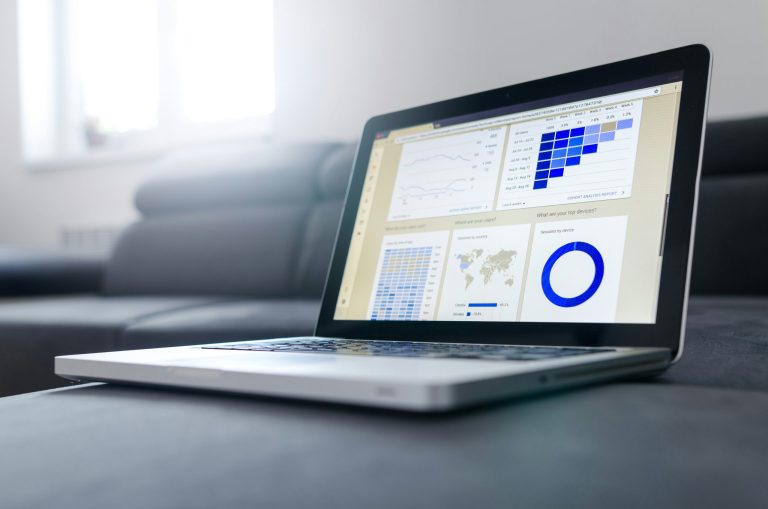
Stepping into an AI-fueled future can feel like landing on Mars. Thrilling, yes, but brimming with unknowns. Thankfully, my journey didn’t involve space suits or dehydrated meals—it circled around AI-driven market research tools. Intriguing isn’t it?
Declassifying data can be as daunting as decoding cryptic alien messages. It took me 123 different software trials (a number I stopped at only for its symmetry) to find tools that turned the Martian landscape of data analysis into a navigable terrain. The gems that emerged not only transformed the Martian cliffhangers into manageable molehills but also made critical data accessible and actionable.
What if I told you a voyage through these market research tools left me with a treasure trove of valuable insights and strategies? Well, buckle up, because we’re about to explore this alien landscape for the best AI-powered companions in your business journey. Lightweight enough for a rookie, yet powerful enough for the seasoned data astronaut – these are my personal top picks.
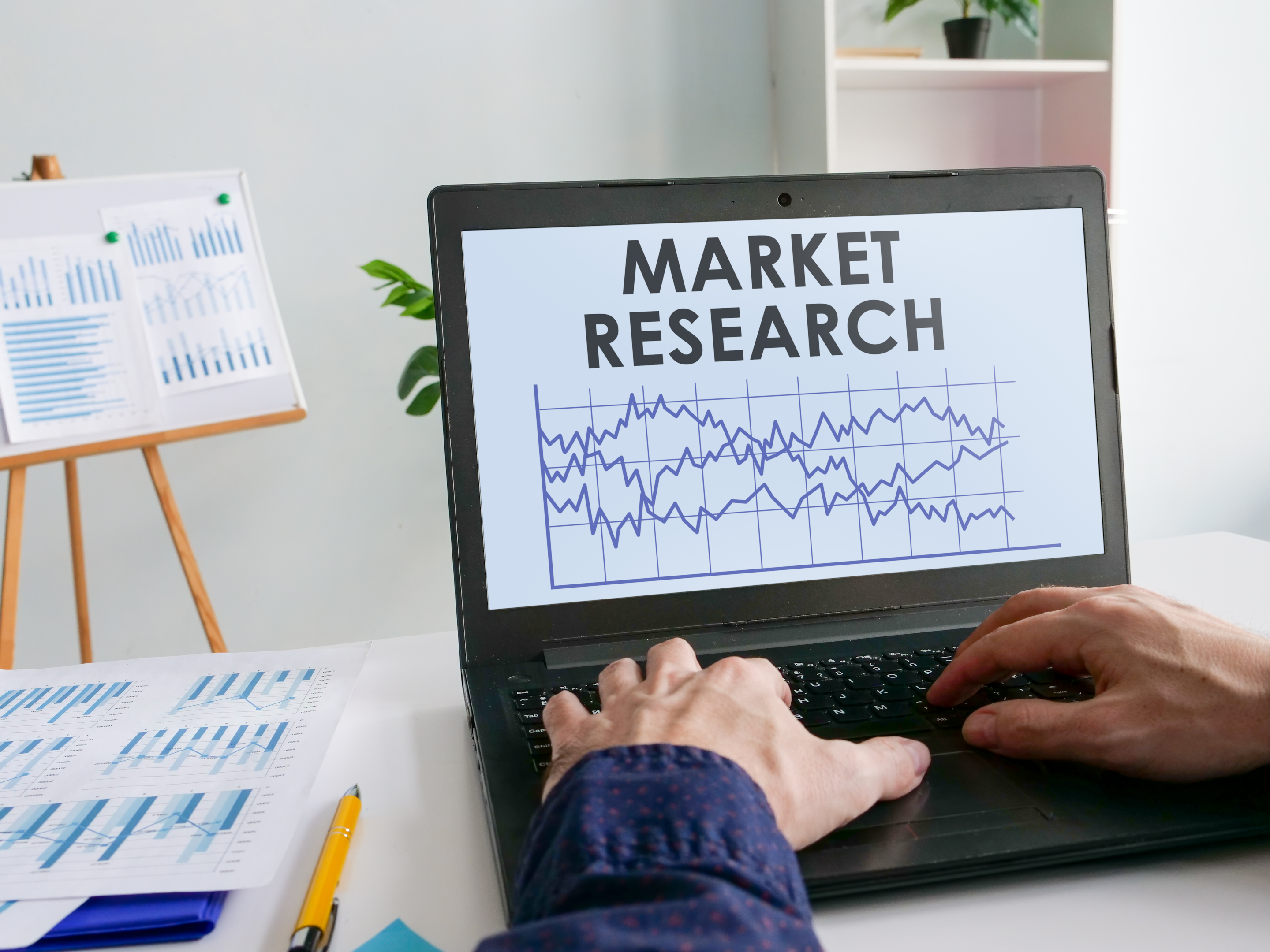
Unveiling the power of AI in market research: My journey
- Discover how AI reshapes the way we conduct market research.
- Get a first-hand account of the seismic change AI brought to my market research approach.
- Explore the potential of AI-powered tools and why they are a game changer in the market research field.
My first encounter with AI in market research
Swept by the tsunami of Big Data and the burgeoning need for accurate insights, AI caught my attention in the vast ocean of market research. Heralded as the bearer of a new chapter in data analysis, AI intrigued me instantly. Wearing the hat of a market researcher, my ears tingled at the notion of automating end-to-end data analysis processes, enabling highly relevant and real-time insights.
The true essence of AI for me lay in its capacity to churn through vast pools of structured and unstructured data, drumming out intelligent insights that surpassed the capabilities of manual processing. The melodic blend of AI with market research painted a vivid picture of enhanced accuracy, greater efficiency, and unprecedented depth of insight.
The transformation in my market research approach
Like a magician, AI transformed my research approach from a manual, time-consuming activity to an automated, highly efficient process. The lure of real-time data collection, high-speed analysis, and dynamic insights changed my perception of market research – from a task involving tedious number crunching to an exciting hunt for actionable insights.
Harnessing AI, I dived into a wealth of structured and unstructured data, piercing the surface to dig out hidden gems. With AI’s razor-sharp focus, siloed and irrelevant data turned into a coherent narrative highlighting consumer behavior, market trends, and competitive landscape. The impact was profound. The scope of my research expanded, and the speed of generating insights skyrocketed, heralding a new era in my profession.
The new approach was by no means devoid of challenges. Transitioning from the familiar yet manual methods to sophisticated AI tools needed acclimation. Yet, the results – precise, high-speed, and context-rich analysis – proved the investment worthwhile and paved the way for future advancements.
The crux of the story is this – AI brings a colossal shift in the method, speed, and depth of market research, setting higher benchmarks in the industry. The key to thriving in this milieu lies in embracing this change and learning to harness the power of AI for actionable insights.
Examples of companies using AI for improved market research
AI has significantly transformed market research across various industries, providing insights with unprecedented speed and accuracy. Here are a few examples:
- Ipsos and Synthesio: By leveraging AI-enabled Consumer Intelligence (AICI), companies like Danone have studied target audiences using social data to identify key preferences, interests, and hobbies. For instance, the Oikos brand incorporated findings into their campaigns, resulting in increased reach and engagement, they went up by 20% and 35% respectively.
- HubSpot: AI tools in HubSpot automate complex data analysis, transforming insights into easy-to-understand reports and compelling visualizations. This automation saves considerable time and leads to smarter, more informed decision-making.
- RXR Realty: This real estate company invested in digital capabilities early on, allowing it to quickly pivot and address needs such as physical distancing and contactless interactions once the pandemic hit. Their digital platform, RxWell, includes a mobile app that provides information on air quality, occupancy levels, and more, helping tenants feel safe.
- Goldman Sachs with Marcus: Goldman Sachs launched Marcus, a digital-first banking service, which quickly adapted to the pandemic’s challenges by offering payment deferrals, showcasing the agility and customer focus of AI-powered digital platforms.

Top AI tools for market research: My tried and tested picks
- Discover the transformative power of AI in data collection processes.
- Understand the role of AI in revolutionizing data analysis.
- Gain insights on the future of predictive analysis, powered by AI.
SurveyMonkey Genius: Ideal for building impactful surveys fast
The main attraction of SurveyMonkey Genius is how it complements traditional market research methods with AI. The tool uses advanced learning mechanisms to quicken the pace of survey generation while ensuring data quality. This hybrid technique provides a considerable edge over its competitors.
The AI was trained on a staggering 25 years of SurveyMonkey’s existing data and anyone who is already using the basic SurveyMonkey platform can try out Genius for free. Hopefully, you’ll find (like I did) that this AI tool will expedite the survey-creation process. For me, it was easy to create a new survey from scratch in under 5 minutes.
From an end-user perspective, one of the striking features is the AI-driven insights derived from the survey. The tool immaculately turns raw data into clear, actionable points to further strategize market plans. Plus, with this platform, you can also conduct sentiment analysis on responses to any open-ended questions.
SurveyMonkey Genius is suited to existing SurveyMonkey users looking for a boost and new users will be surprised at how quickly they can get new research initiatives up and running.
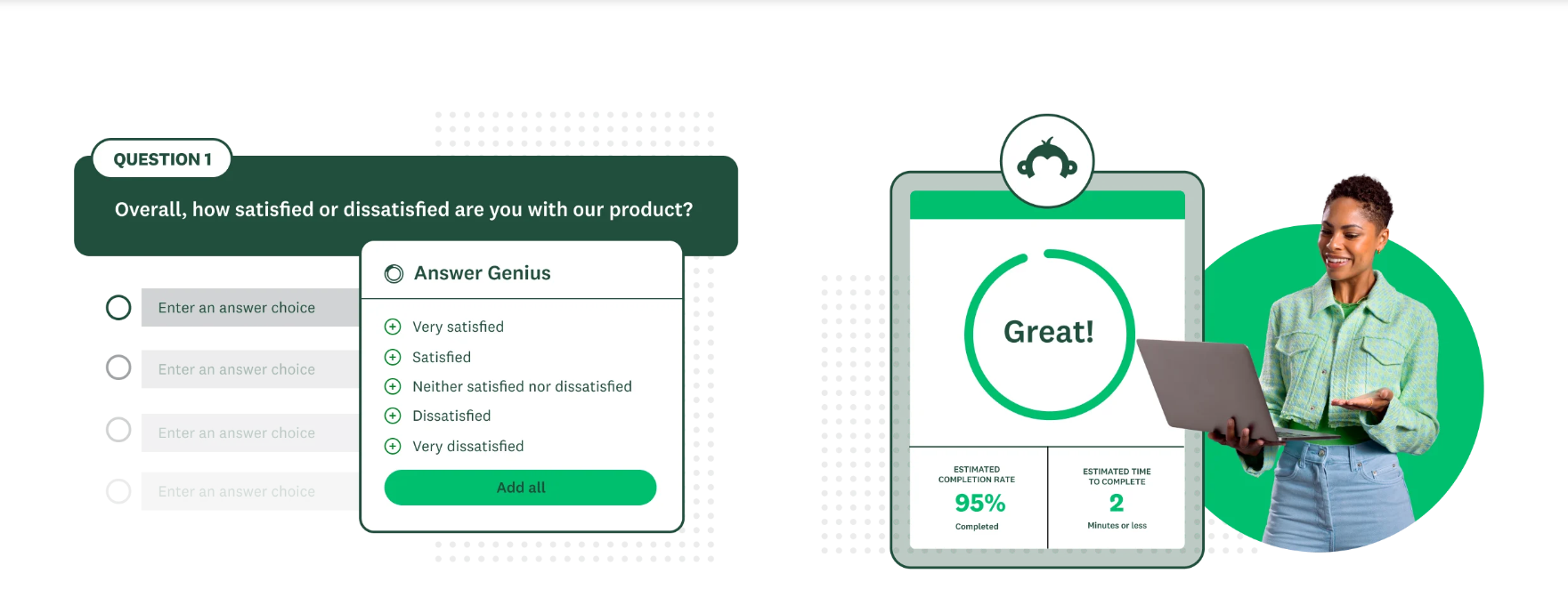
Speak: The power of AI in market analysis
Speak brings forth the power of AI to dig deep into market metrics and understand consumer behavior. Juxtaposing audio, text, and pattern analysis, Speak serves as a complete package for market researchers. Delving into complex data patterns, the AI predominantly decodes consumer preferences to bring forth emerging market trends using natural language processing.
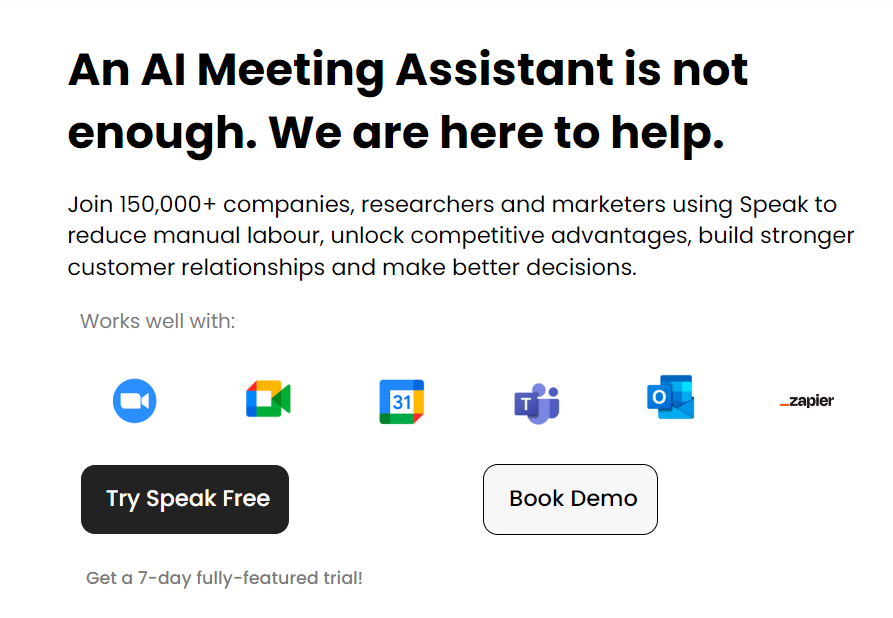
For anyone who prefers visuals rather than boring tables of data, Speak will make sure your data and insights are presented clearly and in a pleasing visual format for easy action.
What sets Speak apart is its unique speech analysis feature. It meticulously breaks down spoken feedback into defined metrics, offering groundbreaking insights for understanding the consumer psyche. Plus, it’s great for recording and transcribing your customer interviews or data gathered from focus groups.
Prices start at $29 per month for some of the upgraded features, like the chat function, but you can also use the basic features on a pay-as-you-go basis. You can also get 2 hours of free transcription to get started.

Exploding Topics: The trend-spotting market research tool
Exploding Topics is an AI-powered trend-spotting platform designed to identify and forecast emerging trends by analyzing data from online discussions, search engine queries, and social media activity. It benefits investors, entrepreneurs, enterprises, and content creators by providing insights into under-the-radar markets and emerging trends. The tool is particularly useful for market research, product development, competitive analysis, and content strategy.
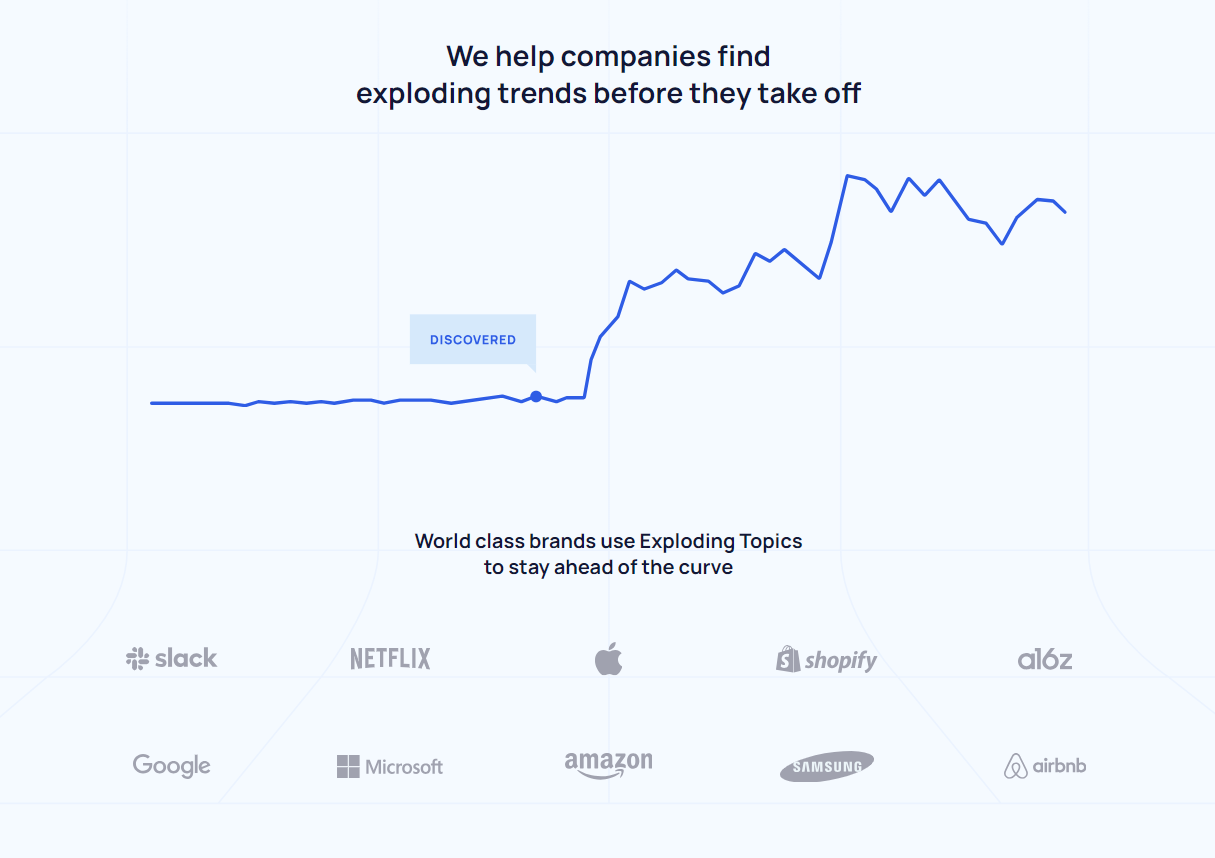
This tool focuses on the use of AI-based data collection as well as human experts. This is how they stay ahead of the curve on market trends. Aside from trending products or companies, you can see 15 years of changes in popularity, compare typical prices, and keep track of any emerging startups. Their data is updated daily, so you always get the most current information.
Another nice feature is that you can try Exploding Topics for free and without logging in. This only allows you to browse a portion of the database, but you should quickly decide whether or not the paid plan is right for you.
For example, these are the results I got when filtering through 2 years’ worth of data using the topic “AI.”
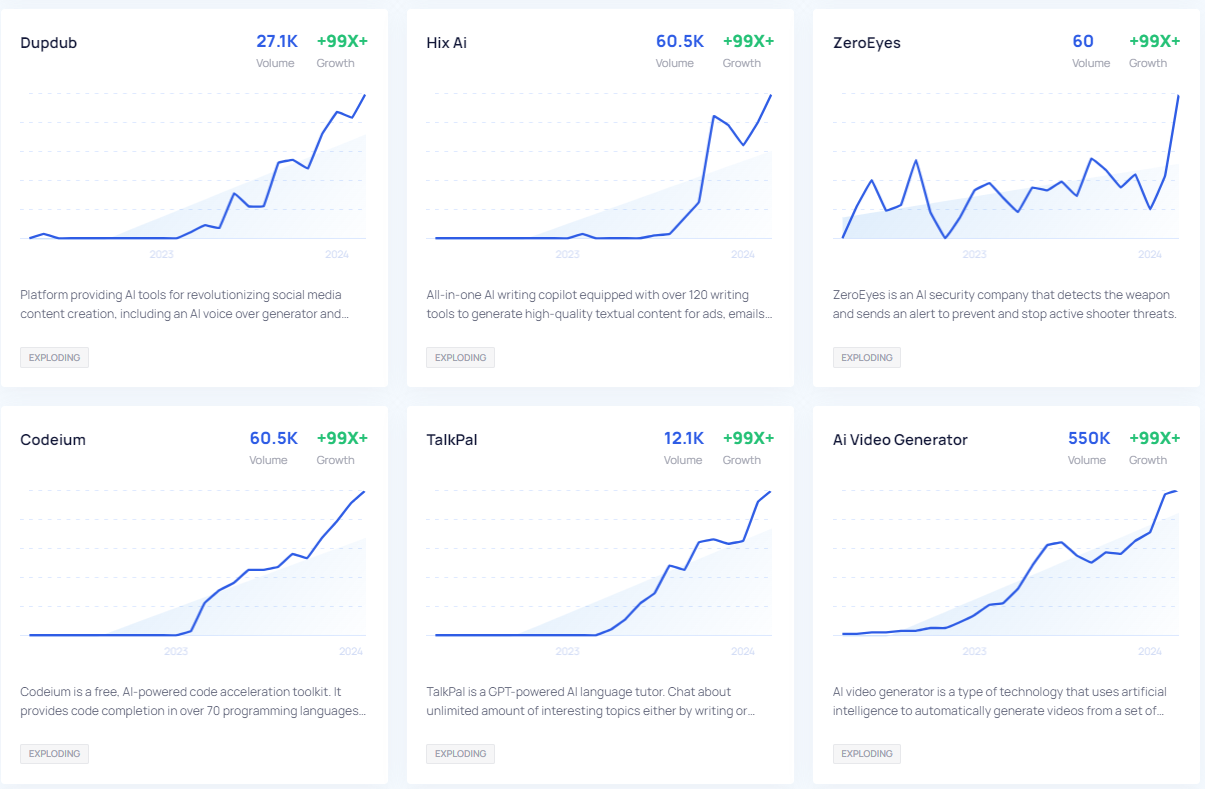
Crayon: Get the jump on your competitors
A major advantage of Crayon is its striking competitor analysis feature. The AI-powered computer engine scans colossal market data to detect patterns, frequencies, and anomalies, transforming competitive analysis into a real asset.
The true strength of Crayon AI lies in its power to filter out the noise and hone in on specific trends, changes, and patterns within competitor data. It delivers insights not just of what your competitors are doing, but also deciphers the “why” behind their actions. By doing so, it provides a broader context that fosters better strategic planning and decision-making.
But that’s not all. The AI tool continues to learn and adapt over time, refining its search parameters to stay aligned with your changing business needs and market dynamics, a feature that remains elusive in many other research tools.
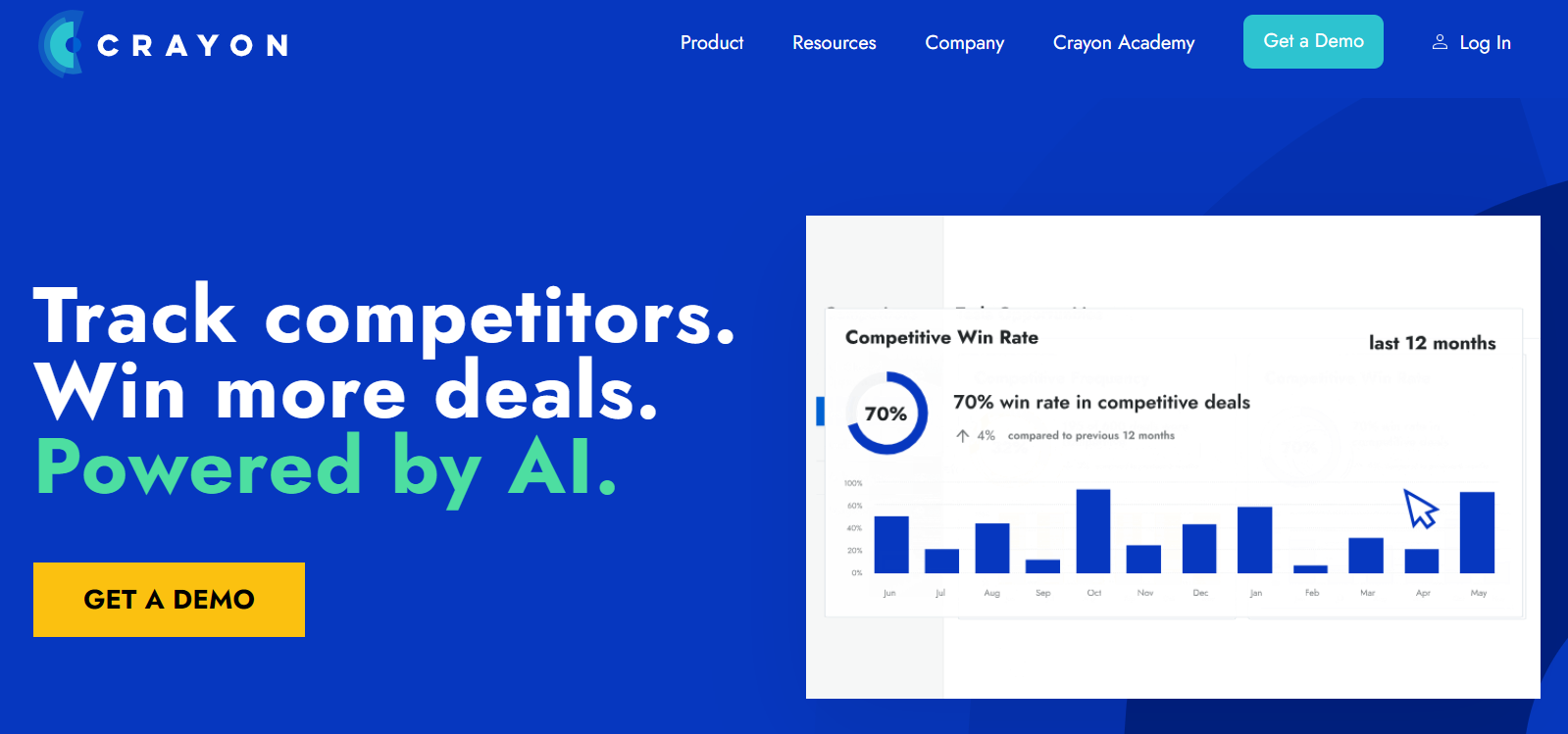
YouScan: The future of social media market research with AI
Bringing AI to the table, YouScan provides detailed insights into social media behavioral data. The picture recognition feature is a standout, proficient at identifying brand logos or products amidst social media clutter.
While many AI market research tools rely solely on finding and analyzing text, YouScan definitely takes things a step further. You can scan images on social media platforms like Instagram looking for glimpses of your own products. I also found the YouScan chatbot helpful and easy to interact with to extract data by simply posing questions.
While this tool may not be useful for everyone, if you are conducting marketing research on an existing product that appears frequently in social media posts, YouScan can help you gain deeper insights into your consumers. At $299 per month billed annually, you’ll need to have a fairly well-used brand to make the price tag worth it.
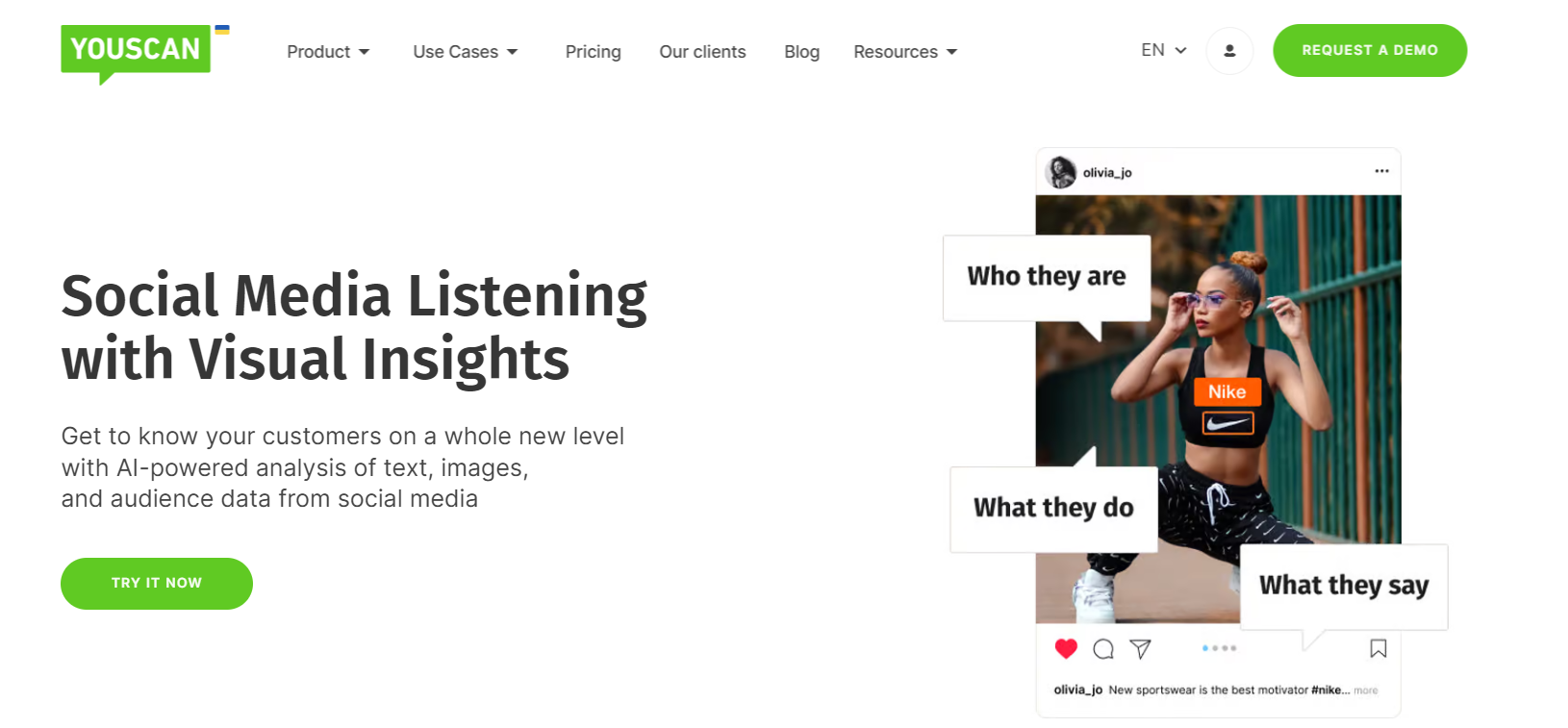
How to harness the power of AI for market research
- Get clarity on choosing the right AI tool for the market research process.
- Be informed on integrating chosen AI tools into your plan.
- Elevate your data parsing skills with AI interpretations.
Step 1: Identifying the right AI tool
The spectrum of AI-powered market research software is vast, and identifying the right one for your unique application can feel overwhelming. The initial step is to clearly outline your research objectives. Are you seeking competitive insights, trying to understand user behavior, or validating a market before launching a new product? Equipped with your research intentions, you can then match your needs with AI platforms best suited to provide these insights.
Some AI tools focus on gathering and analyzing industry trends, competitors’ strategies, and potential market opportunities. Others are built for understanding consumer purchasing behavior and predicting future consumption patterns.
Remember, a tool’s feature list doesn’t always equate to its utility. Be sure to assess the tool’s user-friendly nature, the flexibility of its dashboard, the quality of its technical support, and even the continual upgrades the tool offers.
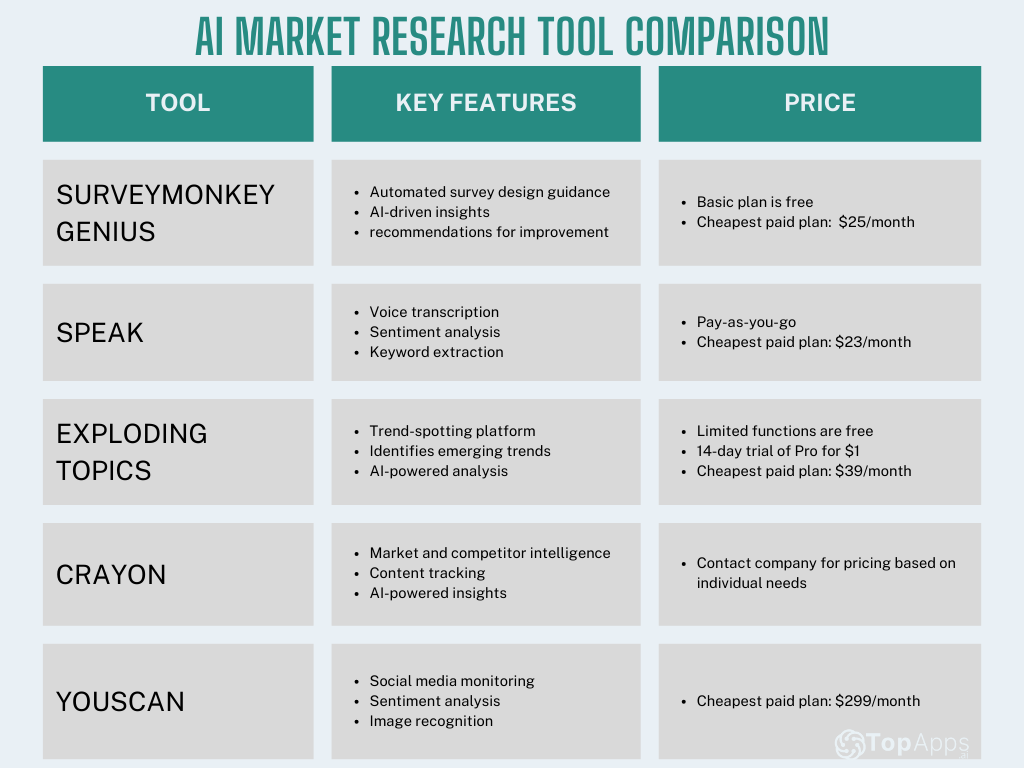
Step 2: Integrating AI tools into your research process
The next step is to integrate your chosen AI tools into your research process. This, of course, will depend on the specifics of your project and the tool itself. However, common stages include setting up the tool, connecting it to your data sources, adjusting settings to match your research design, and training your team to use the tool efficiently.
Despite widespread automation, market research remains a collaborative endeavor. Thus, it’s essential to ensure your selected AI tool can seamlessly interface with other digital platforms in use, such as your CRM, web analytics dashboard, or social listening tools.
Remember, AI tools are not an end-all solution – they should act as an augmenting instrument enhancing your market research capacity, not replacing it altogether.
Step 3: Analyzing and interpreting data with AI
Once you have your AI tool up and running, it’s time to make sense of the data it produces. AI’s powerful algorithms excel at parsing huge quantities of data and identifying patterns, trends, and correlations that would be unfeasible to uncover manually.
However, human intelligence remains essential to interpret these insights, identify the why behind the patterns, and translate them into actionable business strategies. Training should be provided to interpret the results effectively, understand AI-generated insights, and relate them to wider business goals.
Machine learning algorithms, for instance, can detect clusters of similar customer behaviors. But it’s up to you to generate the story behind these clusters and consider how your marketing strategy needs to adapt.
Stay mindful of AI’s limitations and liabilities — avoid over-reliance and retain critical oversight.
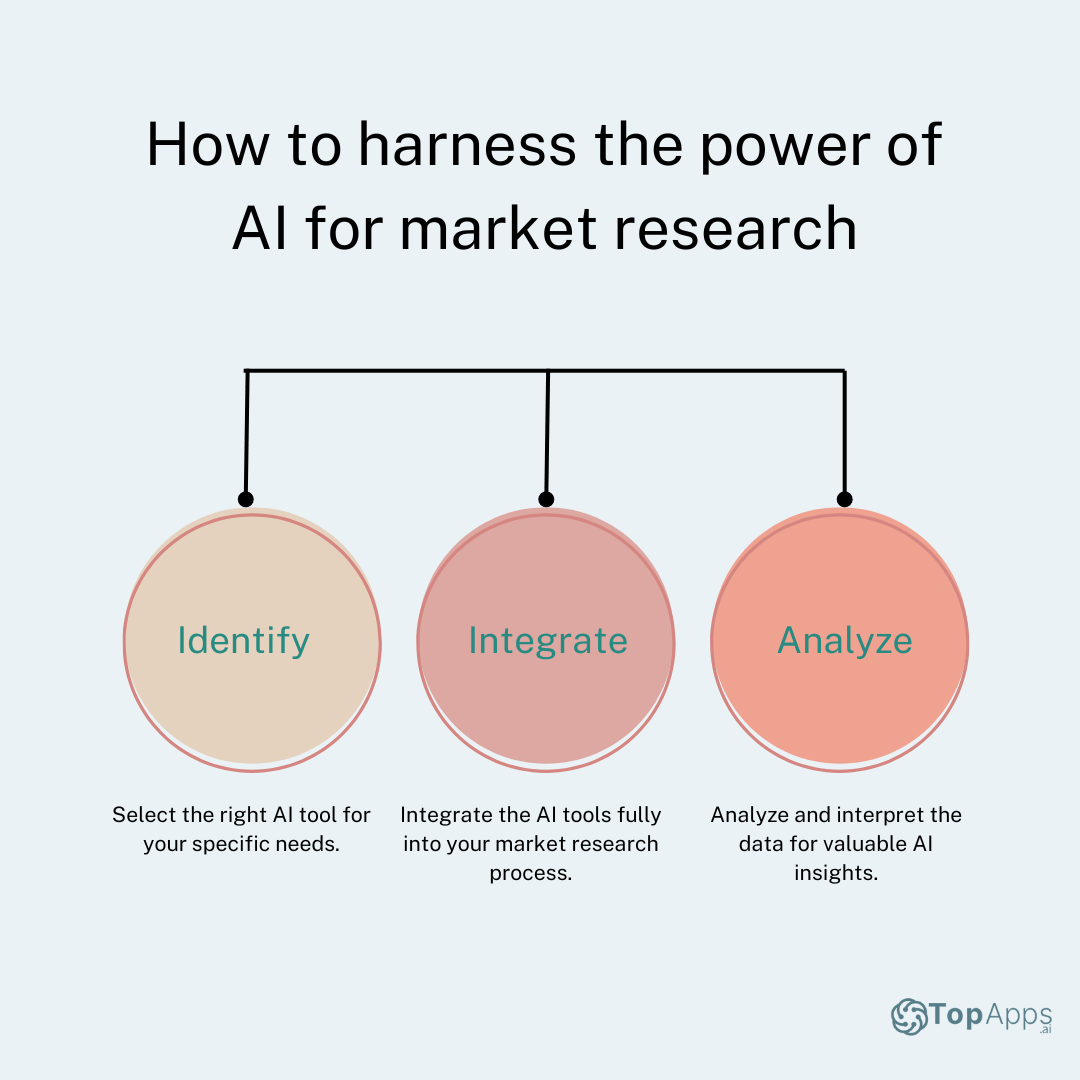
AI and data analysis: Revolutionizing market research
- Understanding AI’s role in data analysis.
- Discovering the practical implications through a successful case study.
The role of AI in data analysis: Speed and accuracy
AI has changed the game in market research by enhancing data analysis. Datasets were previously large and cumbersome to analyze, AI now can process and extract meaningful insights from these sets quicker than ever before. Automated algorithms refine raw data into accurate, actionable findings, eliminating human biases and errors. This newfound efficiency allows businesses to adapt to market changes and trends and make data-driven decisions almost instantaneously.
Speed is a critical component in today’s rapidly evolving market. The days of waiting weeks for market research data to be analyzed are long gone. Now, AI completes this exhaustive task in mere hours. This swift turnaround time allows for more immediate implementation of strategies, setting businesses apart from their competition.
AI’s unprecedented accuracy has fueled the adoption of data analysis in market research. Forget the days of manual erroneous data interpretations – with AI, the risk of misinterpretation is markedly reduced. Pinpoint precision allows businesses to recognize patterns and predict trends, fostering a more proactive stance toward market shifts.
Levi Strauss case study: Successful data analysis with AI
Levi Strauss & Co. has adeptly harnessed AI in its data analysis and market research strategies to significantly enhance its business operations and customer engagement. Through innovative AI applications, Levi’s has been able to drive sales and improve inventory management.
AI-driven inventory management
Levi’s utilized AI to revolutionize its inventory management system. By analyzing vast amounts of sales data, customer preferences, and market trends, AI algorithms helped the company predict demand for different products with high accuracy. This predictive capability enabled Levi’s to optimize its stock levels across retail outlets and online platforms, ensuring that popular items were always available to customers, thus reducing stockouts and overstock situations.
Targeted promotions and personalization
AI also played a crucial role in enhancing Levi’s marketing strategies through targeted promotions and personalization. By analyzing customer data, Levi’s was able to deliver personalized marketing messages and offers to customers. This approach not only improved customer engagement but also significantly increased the effectiveness of promotional campaigns. For example, an AI-driven campaign in Europe utilized insights from AI models to tailor promotions, resulting in sales five times higher than the previous year.
Optimizing e-commerce strategies
During the pandemic, Levi’s leveraged AI to quickly adapt to the surge in e-commerce. The company used AI to manage the logistics of fulfilling online orders from both warehouses and retail stores. This flexible approach allowed Levi’s to maintain efficient operations despite the unprecedented increase in online shopping. The AI-driven system ensured that customer orders were processed and delivered promptly, enhancing the online shopping experience.
Enhancing customer insights
Levi’s use of AI extends to gaining deeper insights into customer behavior. By analyzing data collected from various touchpoints, Levi’s AI systems could identify patterns and trends in customer preferences and buying behavior. These insights informed product development, marketing strategies, and customer service improvements, enabling Levi’s to stay ahead of market trends and better meet customer needs.

AI-powered predictive analysis: The future of market research
- Unravel the essence of AI-powered predictive analysis in market research.
- Discover how predictive analysis is transforming the market research landscape.
Understanding AI-powered predictive analysis
Harnessing artificial intelligence to underpin predictive analysis renders numerous benefits. AI, with its massive data processing capability, unpicks patterns, correlations, and trends from vast datasets. Using machine learning algorithms, AI models can learn from these data characteristics without explicit programming, continuously improving predictions in changing market conditions.
Predictive analysis rasterizes large-scale patterns and trends by processing and decoding intricate relationships within data. It scrutinizes diverse historical data to forecast future outcomes and probabilities.
The impact of predictive analysis on market research
Predictive analysis arms market research with precision-guided insights, enabling businesses to anticipate the unknown and stay ahead of trends. It fine-tunes marketing strategies, identifying potential opportunities, and illuminating hidden risks.
For instance, predictive analysis can reveal customer behaviors, predicting how they are likely to react to a new product, service, or policy change. By doing so, businesses can make more informed decisions and craft strategies that resonate with their target demographics.

Let’s wrap it up: My ultimate recommendations
AI takes market research to unbelievable heights. We peeled back the layers of my toolkit: enhanced data accuracy, real-time analytics, streamlined workflow, fast data collection, and cost efficiency. Let natural language processing and machine learning do the heavy lifting for you.
Now you’re standing at a crossroads. It’s time to harness AI’s transformative power for your own market research. Test drive my top picks, explore possibilities, and take your operations from mere survival to soaring success.
Do you feel ready to redefine your research strategy with the AI tools we’ve unearthed? Remember, your success story is waiting just around the AI corner. Will you be our next successful case study?
Inge von Aulock
I'm the Founder & CEO of Top Apps, the #1 App directory available online. In my spare time, I write about Technology, Artificial Intelligence, and review apps and tools I've tried, right here on the Top Apps blog.
Recent Articles

In 2024, your smartphone camera is about to get a whole lot smarter. AI camera apps are transforming the way we capture and...
Read More
Learn how to use advanced search tools, newsletters, and reviews to uncover the perfect AI-focused podcast for you.
Read More
AI chatbot vs virtual assistant? who reigns supreme? We're dissecting the differences, strengths, and weaknesses, using data-driven insights.
Read More